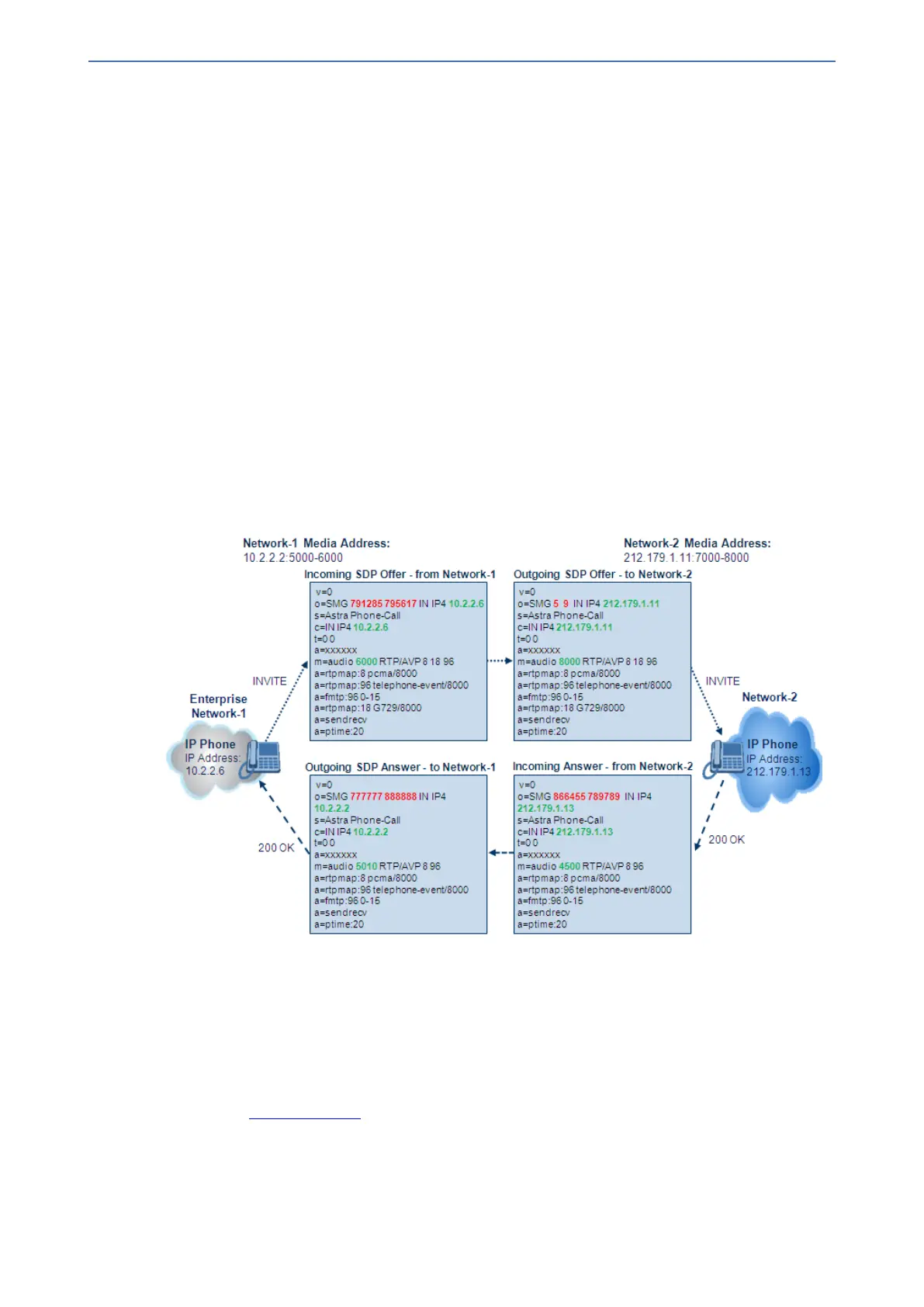CHAPTER30 SBC Overview
Mediant 1000 Gateway & E-SBC | User's Manual
Media Anchoring
By default, the device anchors the media (RTP) traffic. In other words, the media between SIP
endpoints traverses the device. You can change this default mode by enabling direct media
between SIP endpoints. Media anchoring may be required, for example, to resolve NAT problems,
enforce media security policies, perform media transcoding, and media monitoring.
To enforce RTP traffic to flow through the device, the device modifies all IP address fields in the
SDP:
■ Origin: IP address, session and version id
■ Session connection attribute ('c=' field)
■ Media connection attribute ('c=' field)
■ Media port number
■ RTCP media attribute IP address and port
The device uses different local ports (e.g., for RTP, RTCP and fax) for each leg (inbound and
outbound). The local ports are allocated from the Media Realm associated with each leg. The Media
Realm assigned to the leg's IP Group (in the IP Groups table) is used. If not assigned to the IP
Group, the Media Realm assigned to the leg's SIP Interface (in the SIP Interfaces table) is used.
The following figure provides an example of SDP handling for a call between a LAN IP Phone
10.2.2.6 and a remote IP Phone 212.179.1.13 on the WAN.
Direct Media
You can configure the device to allow the media (RTP/SRTP) session to flow directly between the
SIP endpoints, without traversing the device. This is referred to as No Media Anchoring (also
known as Anti-Tromboning or Direct Media). SIP signaling continues to traverse the device, with
minimal intermediation and involvement, to enable certain SBC capabilities such as routing. By
default, the device employs media anchoring, whereby the media session traverses the device, as
described in Media Anchoring.
Direct media offers the following benefits:
■ Saves network bandwidth
■ Reduces the device's CPU usage (as there is no media handling)
- 730 -

